Introduction
Pickled dried radish, a timeless delicacy enjoyed across various cultures, combines the crunchiness of dried vegetables with the tangy, savory flavors of pickling. This dish is not only a testament to the ingenuity of preserving food but also a culinary delight that can elevate any meal. Whether served as a side dish, an appetizer, or even incorporated into more complex recipes, pickled dried radish offers a burst of flavor that is both refreshing and satisfying. In this comprehensive guide, we will delve into the intricacies of making delicious pickled dried radish, from selecting the perfect radishes to perfecting the pickling brine, ensuring every step brings you closer to culinary excellence.
Chapter 1: Understanding the Ingredients
1 Selecting the Right Radishes
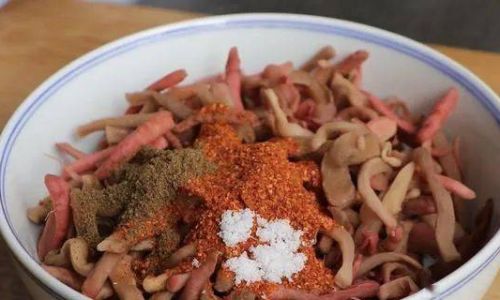
The foundation of any good pickled dried radish starts with selecting the right radishes. While there are numerous varieties available, some are better suited for pickling and drying than others. For instance, daikon radishes, known for their large size and mild flavor, are ideal candidates. Their crisp texture holds up well during the drying process, and their neutral taste allows the pickling spices and vinegar to shine.
When choosing radishes, look for firm, smooth skin without blemishes or soft spots. Freshness is key; avoid radishes that have been sitting in the produce section for too long, as they may have lost their crispness and flavor. Additionally, opt for radishes that are relatively uniform in size, as this will ensure consistent drying and pickling times.
2 The Importance of Drying
Drying is a crucial step in the pickling process as it concentrates the flavors of the radish and creates a delightful crunchy texture. There are several methods to dry radishes, including air-drying, sun-drying, and using a food dehydrator. Each method has its own set of pros and cons.
-
Air-Drying: This natural method relies on ambient air to remove moisture from the radishes. While it’s cost-effective and doesn’t require special equipment, it can be time-consuming and is heavily dependent on weather conditions.
-
Sun-Drying: Similar to air-drying, sun-drying uses sunlight to evaporate moisture. It’s faster than air-drying but同样 affected by weather. Overcast days or excessive humidity can slow down the process and potentially lead to mold growth.
-
Food Dehydrator: This electric appliance offers precise temperature and humidity control, making it the most reliable and efficient method for drying radishes. While it requires an initial investment, the convenience and consistency it provides make it a worthwhile choice for serious food preservers.
3 The Pickling Brine
The pickling brine is what transforms dried radishes into a tangy, flavorful treat. The basic components of a pickling brine include vinegar, salt, sugar (optional), and spices. The type of vinegar you choose will greatly influence the final taste; common options include apple cider vinegar, white vinegar, rice vinegar, and balsamic vinegar. Each type brings a unique flavor profile to the mix.
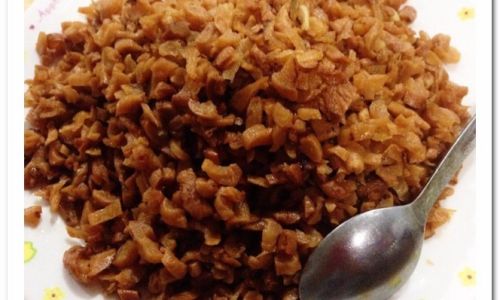
- Apple Cider Vinegar: Offers a mild, slightly sweet taste with a hint of apple flavor.
- White Vinegar: Strong and acidic, providing a sharp tang.
- Rice Vinegar: Mild and slightly sweet, with a delicate flavor.
- Balsamic Vinegar: Rich and complex, adding a layer of depth and sweetness.
Salt acts as a preservative and enhances flavor, while sugar can balance out the acidity and add a touch of sweetness. Spices such as mustard seeds, dill, garlic, and red pepper flakes can be added to create a customized blend that suits your taste preferences.
Chapter 2: Preparing the Radishes
1 Cleaning and Slicing
Start by thoroughly washing the radishes under cold running water to remove any dirt or debris. Pat them dry using a clean kitchen towel or paper towels. Once dry, slice the radishes into uniform pieces. The thickness of the slices will affect the drying time; thinner slices will dry faster but may become overly crunchy, while thicker slices take longer to dry but retain more moisture and flavor.
2 Blanching (Optional)
Blanching is a step that some recipes call for to soften the radishes slightly and help them retain their vibrant color during drying. To blanch, bring a large pot of water to a boil, add a small amount of salt, and then carefully drop the radish slices into the boiling water. Use a slotted spoon or strainer to ensure they don’t stick together. Blanch for about 2-3 minutes, then quickly transfer the slices to an ice water bath to stop the cooking process. Drain well before proceeding to the drying step.
Chapter 3: Drying the Radishes
1 Preparing for Drying
If using a food dehydrator, preheat it to the recommended temperature for drying vegetables, typically around 135°F (57°C). If air-drying or sun-drying, ensure the area is well-ventilated and free from dust or debris. Lay the radish slices on drying racks, trays, or clean muslin cloth in a single layer to ensure even drying.

2 The Drying Process
Drying time can vary depending on the method used, the thickness of the slices, and environmental conditions. In a food dehydrator, it typically takes 6-12 hours. Air-drying can take several days, while sun-drying is highly dependent on sunlight availability.
During the drying process, it’s important to monitor the radishes regularly. They should be dry but still slightly pliable. Over-drying can make them too brittle, while under-drying may result in mold during pickling.
Chapter 4: Preparing the Pickling Brine
1 Combining Ingredients
In a large, non-reactive pot (such as stainless steel or enamel-coated), combine the vinegar, salt, and sugar (if using). Stir until the salt and sugar are fully dissolved. Add your chosen spices and bring the mixture to a simmer over medium heat. Allow it to simmer for a few minutes to allow the flavors to meld together.
2 Cooling the Brine
Once the brine has reached the desired flavor, remove it from heat and let it cool to room temperature. It’s important to use cooled brine when pickling, as hot liquid can cook the radishes and soften their texture.
Chapter 5: Pickling the Dried Radishes
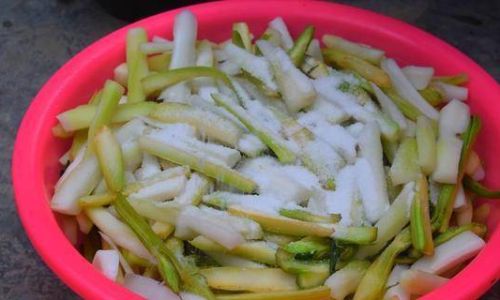
1 Preparing the Jars
While the brine is cooling, prepare your pickling jars. Ensure they are clean and free of any grease or residue. Sterilize them by boiling them in water for a few minutes or running them through the dishwasher’s hot cycle.
2 Packing the Jars
Once the brine is cool, pack the dried radish slices tightly into the prepared jars. This helps the radishes stay submerged in the brine, which is crucial for proper pickling. Use a clean, non-metal utensil to press down gently on the radishes as you pack them in to remove any air pockets.
3 Pouring in the Brine
Carefully pour the cooled brine over the radish slices in the jars, ensuring they are completely submerged. If necessary, use a weight, such as a small glass or a fermentation weight, to keep the radishes under the brine. Leave some headspace at the top of the jar to allow for expansion during storage.
4 Sealing and Storing
Tightly seal the jars with lids and store them in a cool, dark place. The pickled dried radishes will need time to develop their flavors, typically around 2-4 weeks. During this time, the radishes will absorb the brine, becoming more tender and flavorful.
Chapter 6: Serving and Enjoying
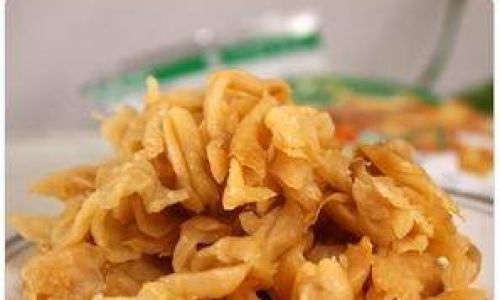
1 Waiting for Perfection
Patience is key when it comes to enjoying pickled dried radishes. The longer they sit in the brine, the more their flavors will develop and meld together. However, you can start tasting them after a couple of weeks to see how they’re progressing.
2 Serving Suggestions
Pickled dried radishes are incredibly versatile and can be enjoyed in numerous ways. They can be served as a side dish with meals, added to salads for a crunchy, tangy bite, or used as a topping for sandwiches and tacos. They also make a great addition to cheese boards or charcuterie platters, providing a refreshing contrast to richer, fattier foods.
3 Storing for Later Use
Properly sealed and stored, pickled dried radishes can last for several months in a cool, dark pantry. If you notice any changes in color, texture, or smell, discard them immediately to avoid food poisoning.
Conclusion
Making delicious pickled dried radishes is a rewarding culinary endeavor that combines the art of preservation with the joy of creating flavorful dishes. By carefully selecting your ingredients, mastering the drying process, and crafting a well-balanced





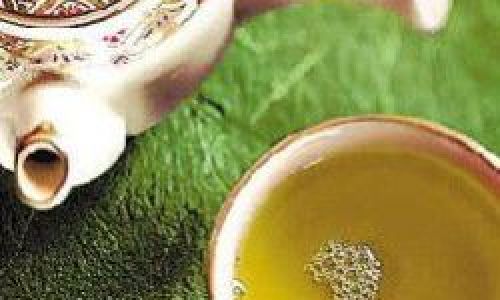
0 comments